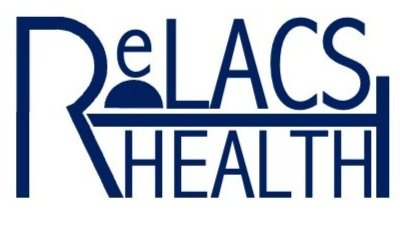Peroneal Nerve Stimulation (aka TOMAC) for Treatment of Restless Legs Syndrome (RLS) in 2024
Non-medication treatments like wearable devices are a highly sought-after treatment for restless legs syndrome (RLS). @andyberkowskimd of ReLACS Health summarizes the newest device from Noctrix Health (Nidra®) that uses peroneal nerve stimulation to relieve symptoms of RLS. It is now available in select states in the US with more coming each month.
The device involves two cuffs that are fastened below both knees and by stimulating the peroneal nerve (also called the common fibular nerve) can create tonic motor activation (TOMAC) of the legs, similar to the effect of walking. The peroneal nerve transmits sensations from the lower leg and foot back to the brain as well as sending signals the opposite direction from the brain down to the muscles to get them to move. The idea is that by stimulating the nerve and its muscles, it will send feedback to the brain to shut off those troublesome RLS symptoms involving an unpleasant urge to move.
The device is put on before one gets into bed and each one is worn below both knees. After it is calibrated by a technician prior to first use, a patient can use it at home at different stimulation intensities up to twice per night for 30 minutes each time if they have symptoms. The stimulation should be strong enough to relieve the RLS symptoms but not bothersome enough to keep one from falling asleep.
Noctrix Health so far has had a few clinical trials with very good results. This was the original clinical trial comparing the device to a sham with improvement to RLS over two weeks:
https://jcsm.aasm.org/doi/10.5664/jcsm.9404
@andyberkowskimd wrote an editorial about the device and two more research studies in October 2023 edition of the Sleep Journal.
https://academic.oup.com/sleep/article-abstract/46/10/zsad230/7261378?redirectedFrom=fulltext
This article showed the device in a randomized trial for four weeks with an open-label extension of 4 weeks:
https://academic.oup.com/sleep/article/46/10/zsad190/7225271
And this study with another 24 weeks of open-label use:
https://academic.oup.com/sleep/article/46/10/zsad188/7223621
Another abstract from the SLEEP 2023 Conference demonstrated improvement to sleep quality as well:
https://academic.oup.com/sleep/article/46/Supplement_1/A311/7182437
The peroneal nerve stimulator device has been fast-tracked with FDA Breakthrough Device designation and is now available as part of a limited release in 2023 in specific states, with potential availability to all U.S. states gradually. Other devices have come out in the past for RLS but none has had rigorous testing against a sham device in a randomized, double-blinded clinical trial. RLS physicians are quite optimistic about the initial results and hope to see real-world use very soon.
After sleep, lifestyle interventions, and other preventative measures, clinicians experienced in RLS turn to iron supplements and IV iron infusions for those with low or low-normal iron levels https://youtu.be/G62qr1S5g_M.
After this, medications are often indicated and the first-line agents are alpha-2-delta ligands like pregabalin (Lyrica®) https://youtu.be/rGpzmFOQzSk and gabapentin (Neurontin®)/gabapentin enacarbil (Horizant®) https://youtu.be/PPFw-W9unvw. These drugs are not always effective or occasionally come with side effects that make them intolerable.
Next in line are opioid medications like buprenorphine https://youtu.be/nCoKMINDiwk and methadone https://youtu.be/h85p2Cw2LVw, which come with some significant risks, but not to the extent that the medical establishment has turned completely again them (read this blog: https://www.relacshealth.com/blog/why-are-doctors-unwilling-to-prescribe-opioids-for-restless-legs-syndrome), so they can be hard to obtain.
Of course, the former first-line medications for RLS from two decades ago--dopamine agonists like pramipexole and ropinirole--cause augmentation, which is a gradual worsening of the condition, sometimes to an extreme level not seen naturally in RLS. https://youtu.be/gO0uQfILGQk
Thus, these medications should no longer be prescribed except in rare circumstances. Read more here:
https://www.relacshealth.com/blog/v3hk6jap03ymbz8z0k7o54qb70kfku
Because of this, patients with RLS are looking for non-medication alternatives, and hopefully peroneal nerve stimulation/TOMAC can be the beginning of more medication-free options for treatment of this neurological condition.
To read in more depth about RLS and other sleep disorders, follow A ReLACSing Blog:
https://www.relacshealth.com/blog
These videos are for general medical information.





